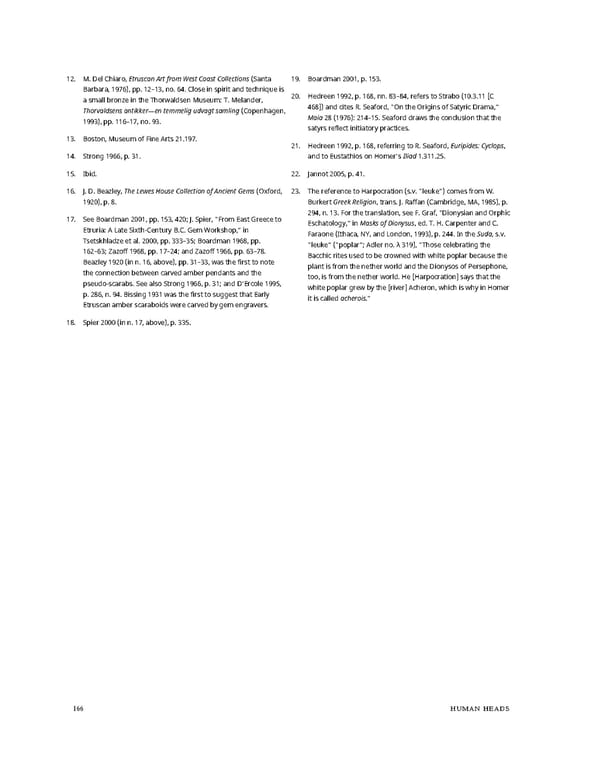12. M. Del Chiaro, Etruscan Art from West Coast Collections (Santa 19. Boardman 2001, p. 153. Barbara, 1976), pp. 12–13, no. 64. Close in spirit and technique is 20. Hedreen 1992, p. 168, nn. 83–84, refers to Strabo (10.3.11 [C a small bronze in the Thorwaldsen Museum: T. Melander, 468]) and cites R. Seaford, “On the Origins of Satyric Drama,” Thorvaldsens antikker—en temmelig udvagt samling (Copenhagen, Maia28 (1976): 214–15. Seaford draws the conclusion that the 1993), pp. 116–17, no. 93. satyrs reflect initiatory practices. 13. Boston, Museum of Fine Arts 21.197. 21. Hedreen 1992, p. 168, referring to R. Seaford, Euripides: Cyclops, 14. Strong 1966, p. 31. and to Eustathios on Homer’s Iliad 1.311.25. 15. Ibid. 22. Jannot 2005, p. 41. 16. J. D. Beazley, The Lewes House Collection of Ancient Gems (Oxford, 23. The reference to Harpocration (s.v. “leuke”) comes from W. 1920), p. 8. Burkert Greek Religion, trans. J. Raffan (Cambridge, MA, 1985), p. 17. SeeBoardman 2001, pp. 153, 420; J. Spier, “From East Greece to 294, n. 13. For the translation, see F. Graf, “Dionysian and Orphic Etruria: A Late Sixth-Century B.C. Gem Workshop,” in Eschatology,” in Masks of Dionysus, ed. T. H. Carpenter and C. Tsetskhladze et al. 2000, pp. 333–35; Boardman 1968, pp. Faraone (Ithaca, NY, and London, 1993), p. 244. In the Suda, s.v. 162–63; Zazoff 1968, pp. 17–24; and Zazoff 1966, pp. 63–78. “leuke” (“poplar”; Adler no. λ 319), “Those celebrating the Beazley 1920 (in n. 16, above), pp. 31–33, was the first to note Bacchic rites used to be crowned with white poplar because the the connection between carved amber pendants and the plant is from the nether world and the Dionysos of Persephone, pseudo-scarabs. See also Strong 1966, p. 31; and D’Ercole 1995, too, is from the nether world. He [Harpocration] says that the p. 286, n. 94. Bissing 1931 was the first to suggest that Early white poplar grew by the [river] Acheron, which is why in Homer Etruscan amber scaraboids were carved by gem engravers. it is called acherois.” 18. Spier 2000 (in n. 17, above), p. 335. 166 HUMAN HEADS
 Ancient Carved Ambers in the J. Paul Getty Museum Page 175 Page 177
Ancient Carved Ambers in the J. Paul Getty Museum Page 175 Page 177